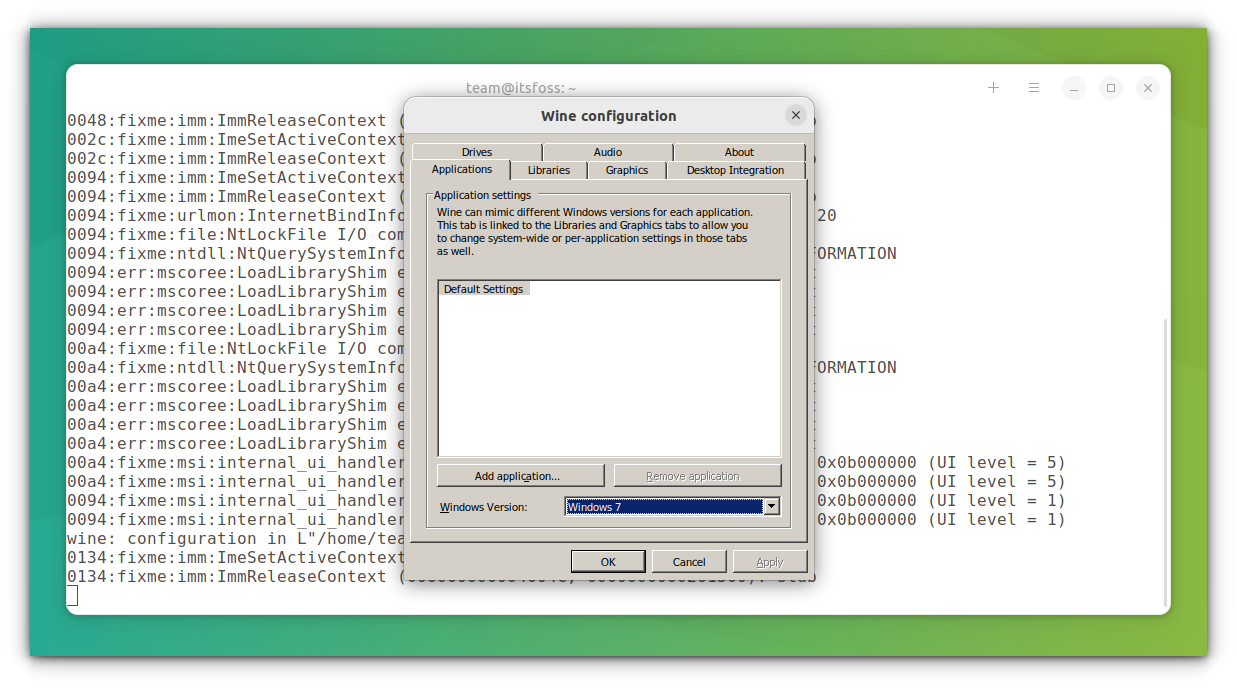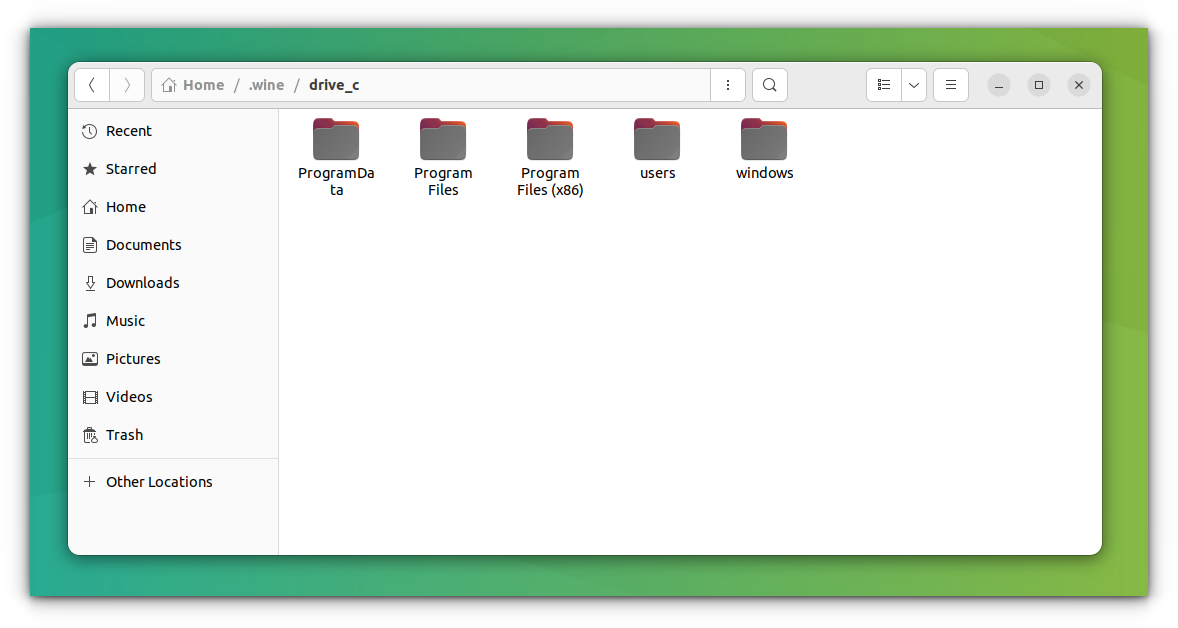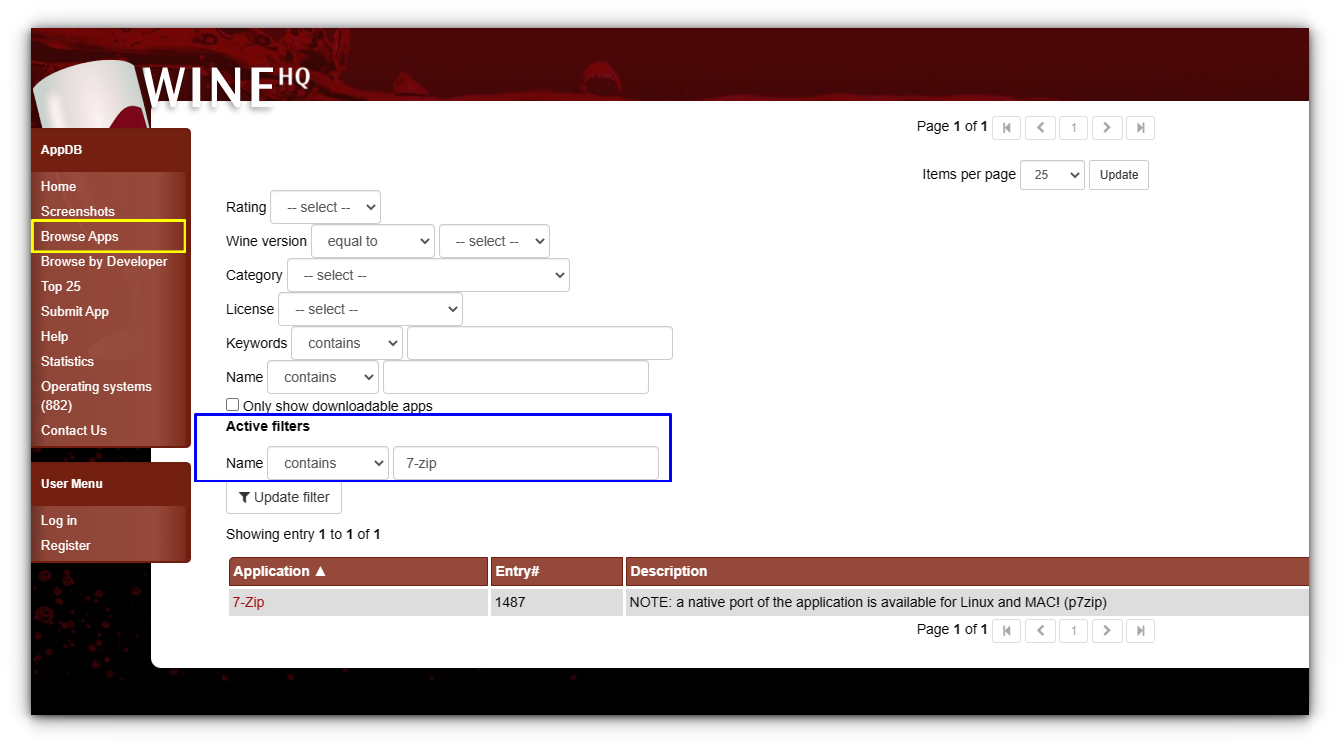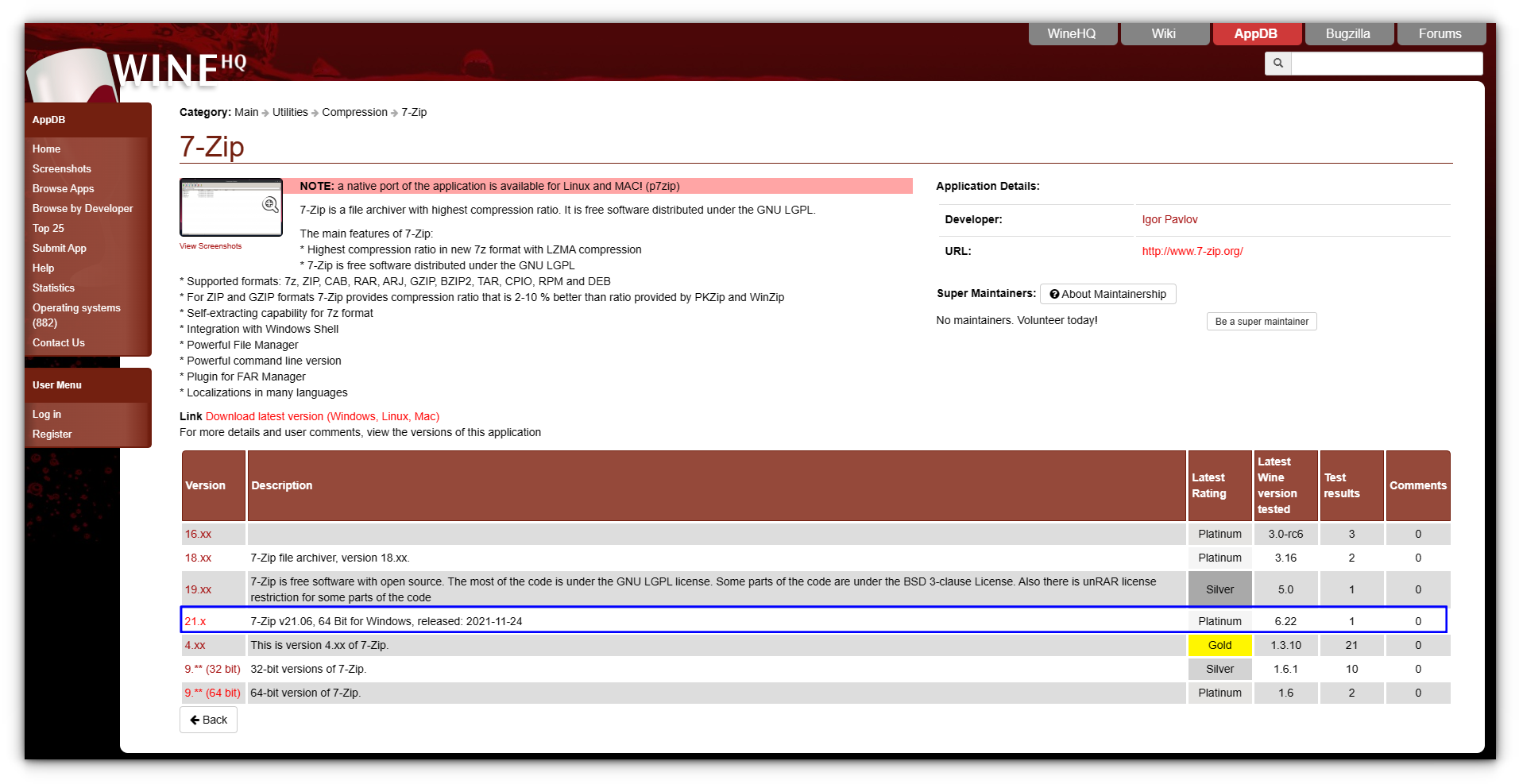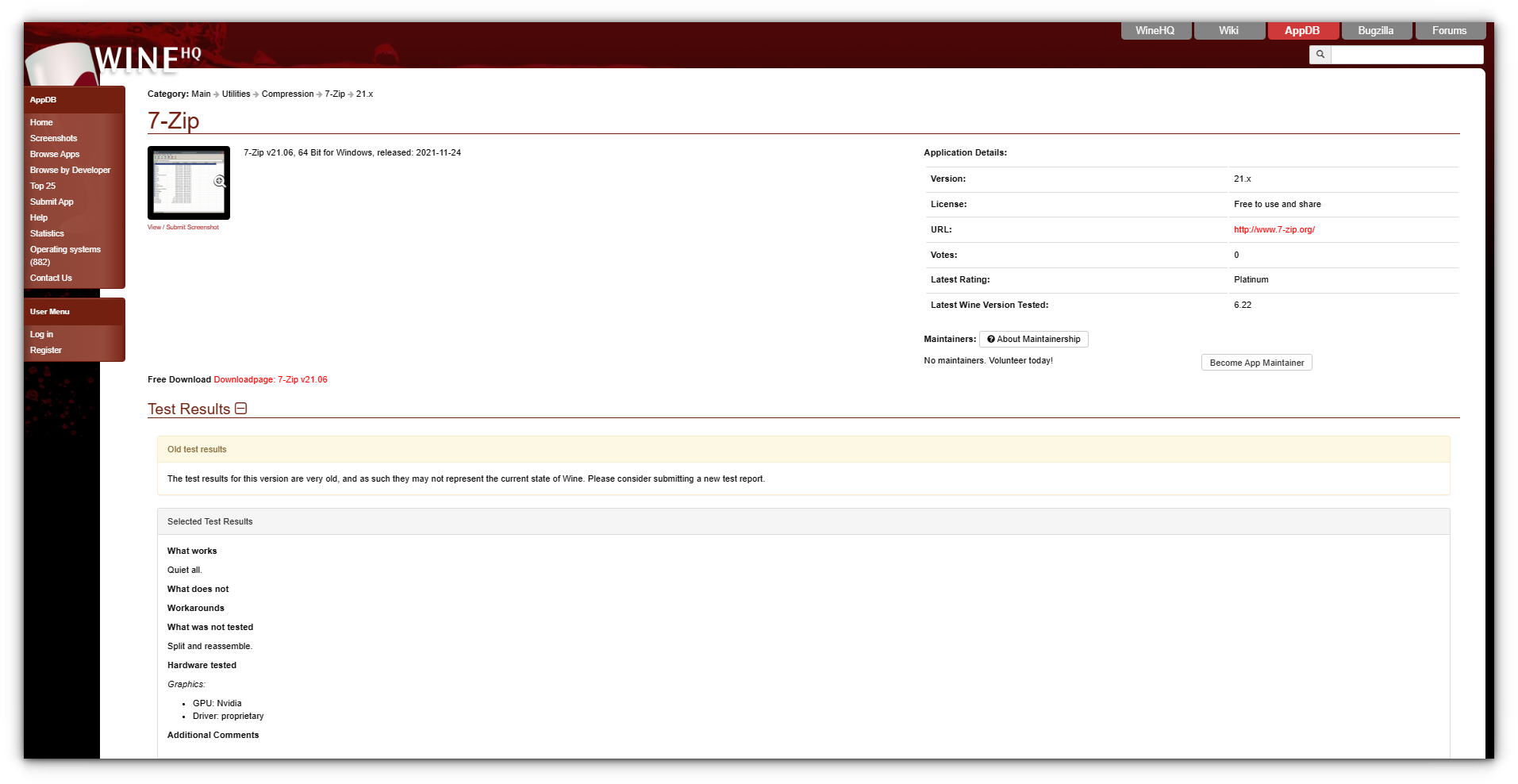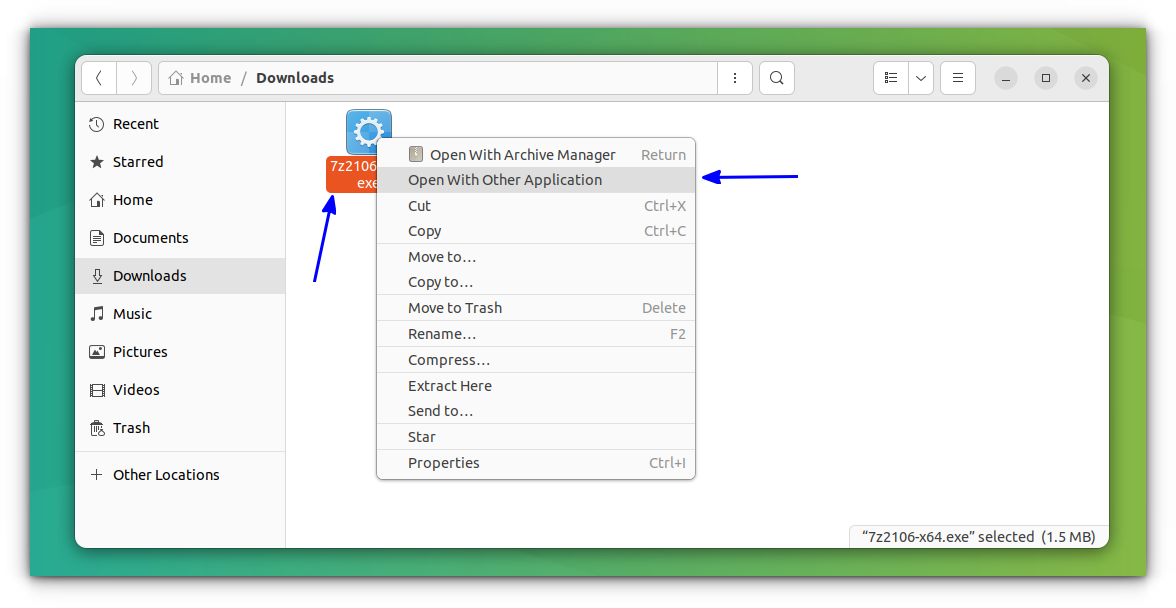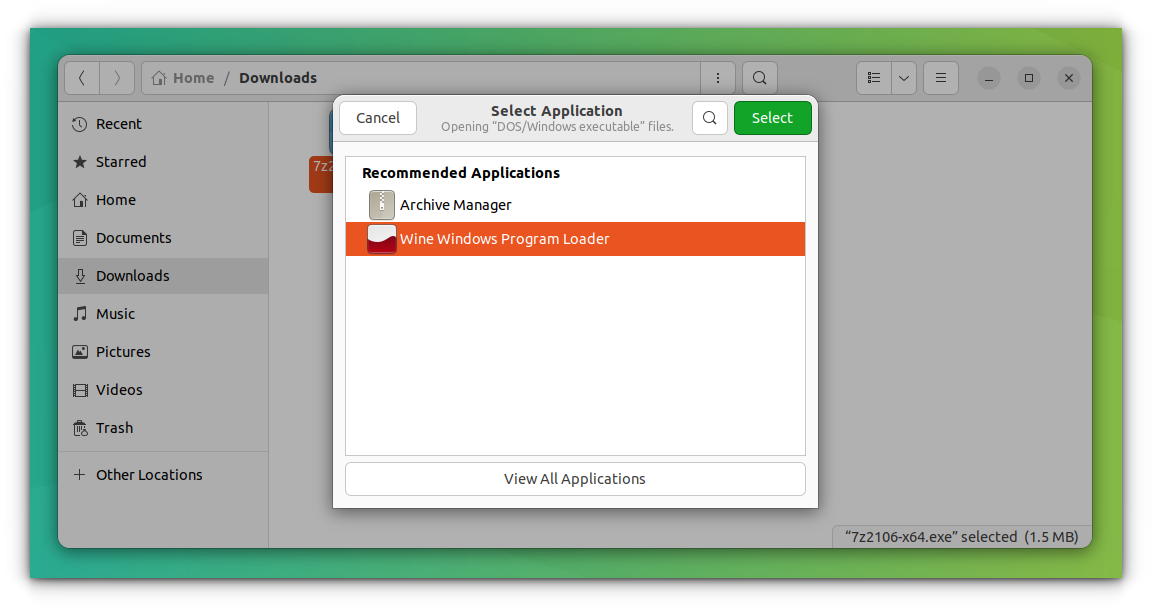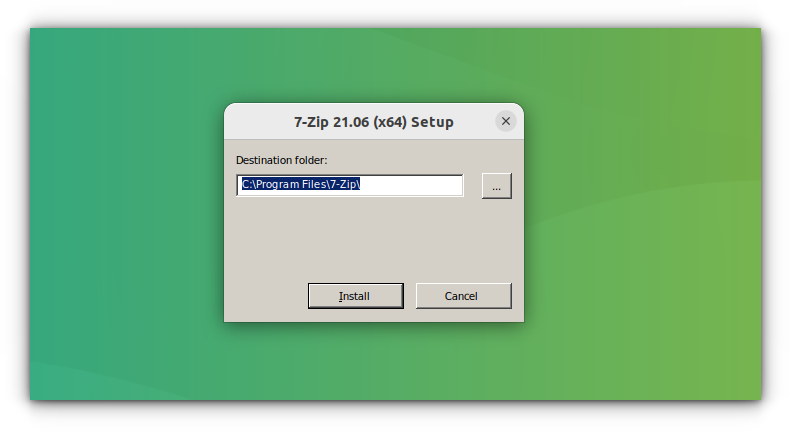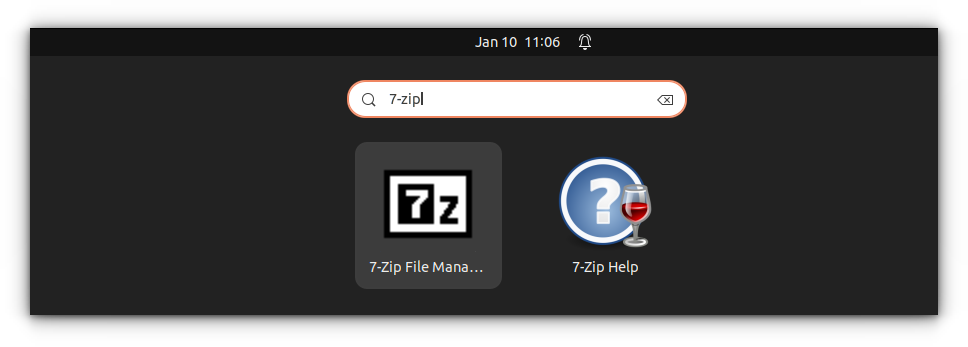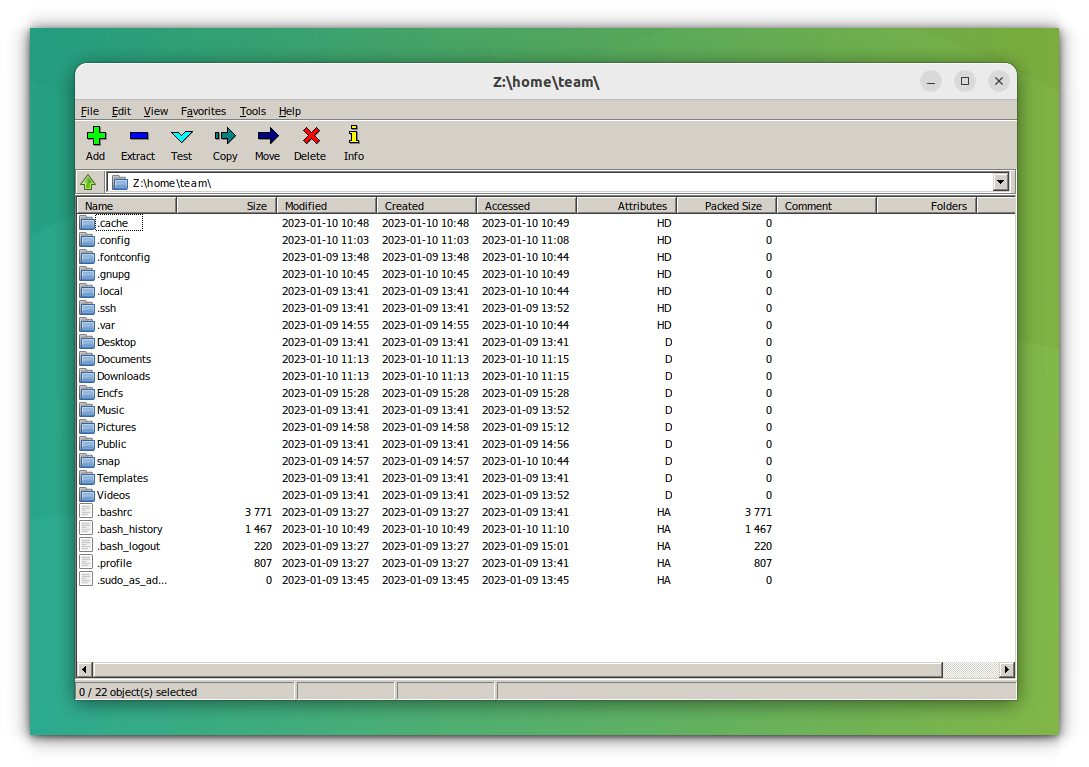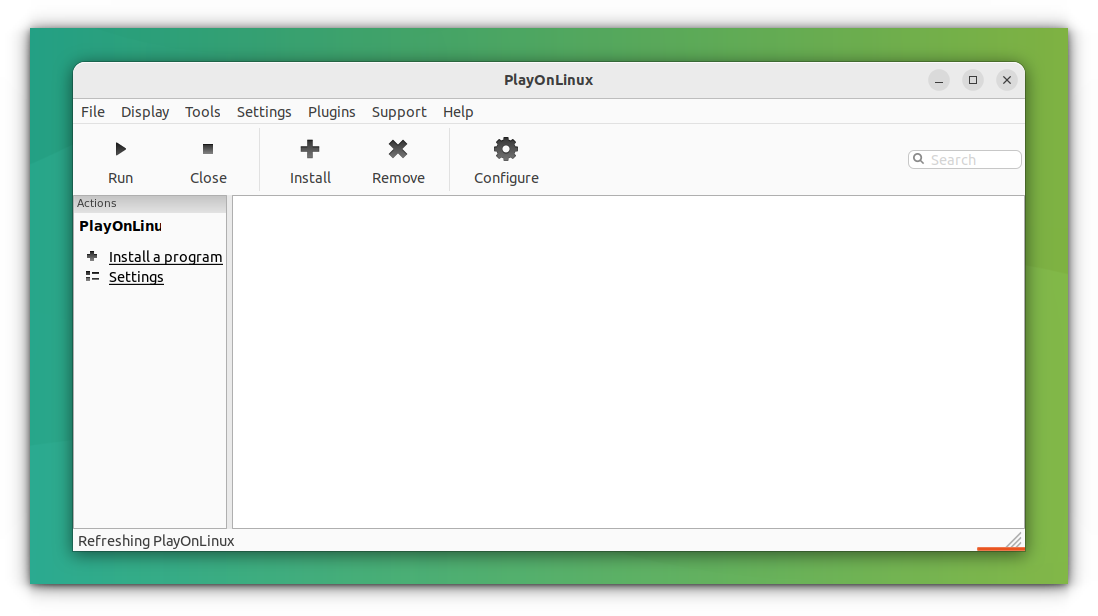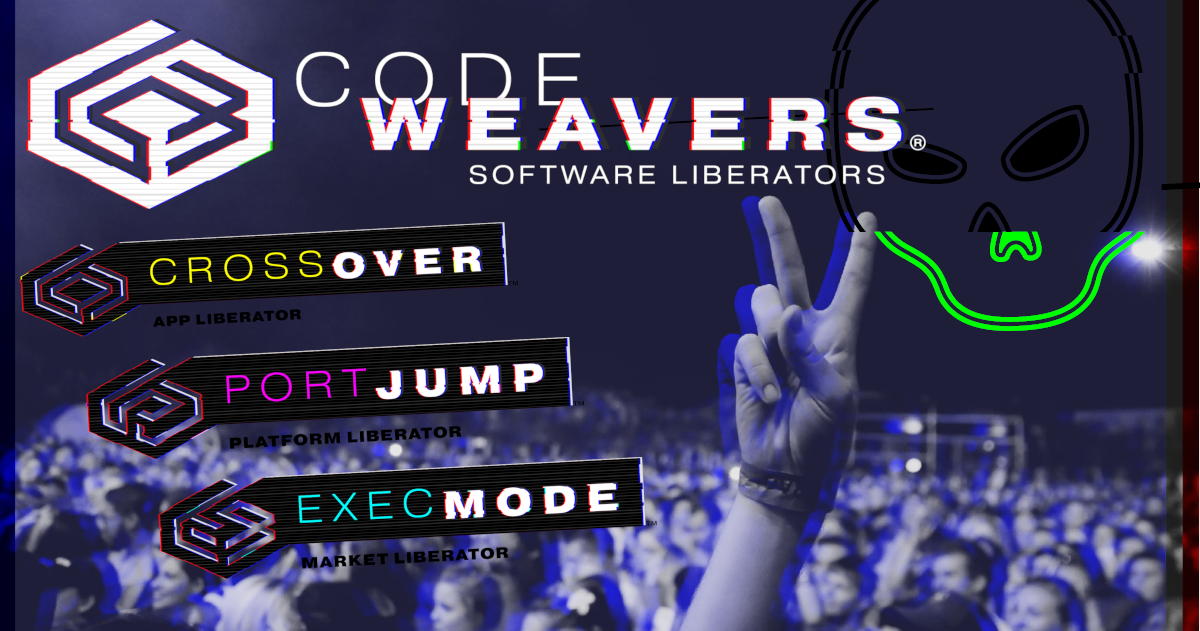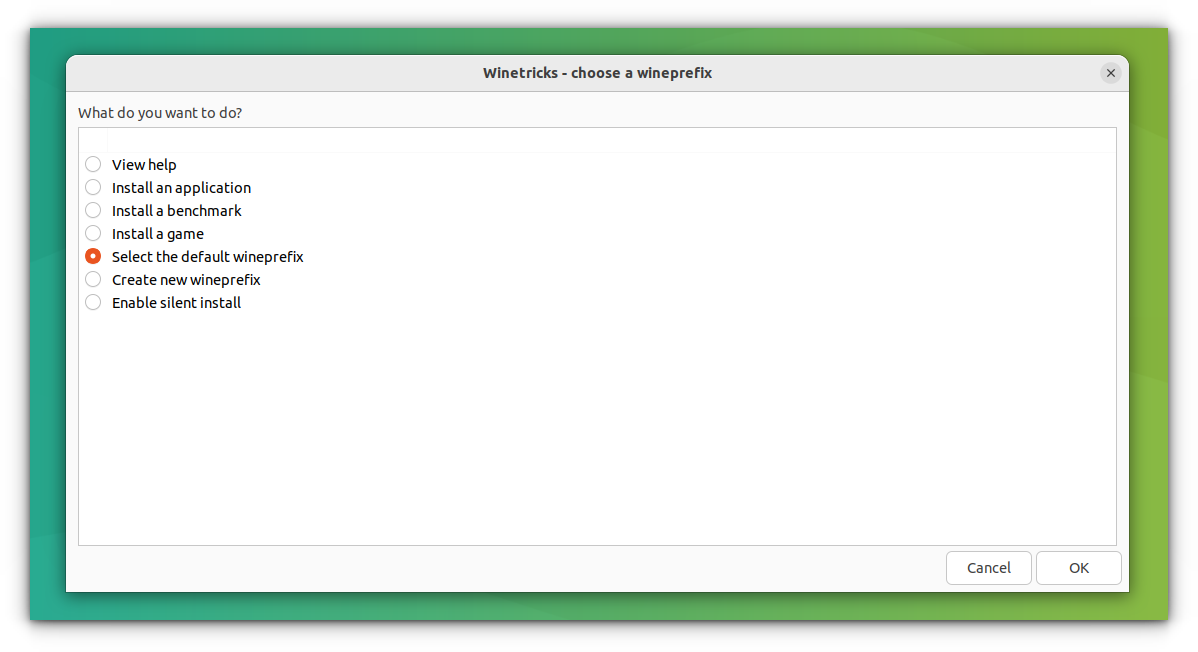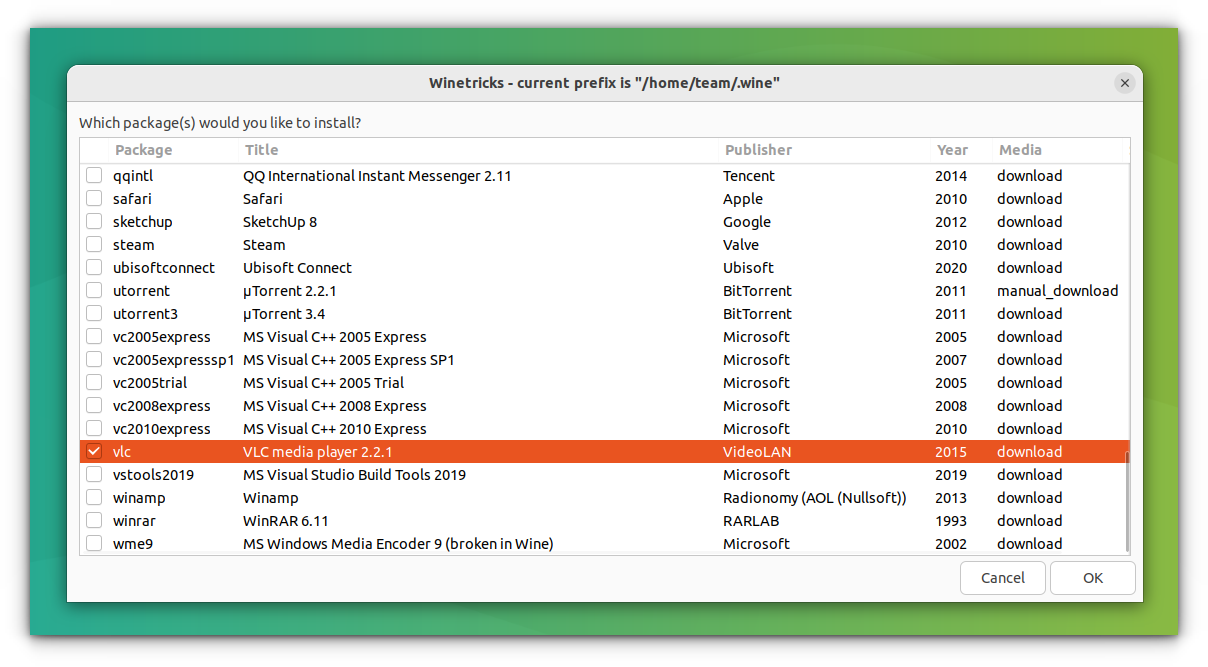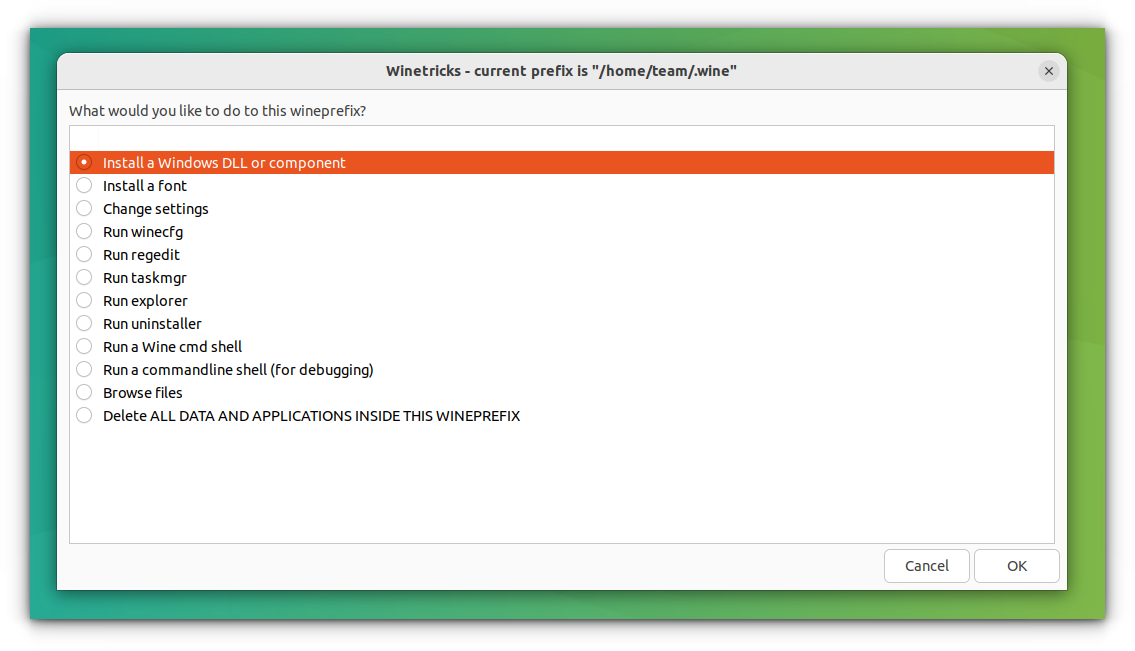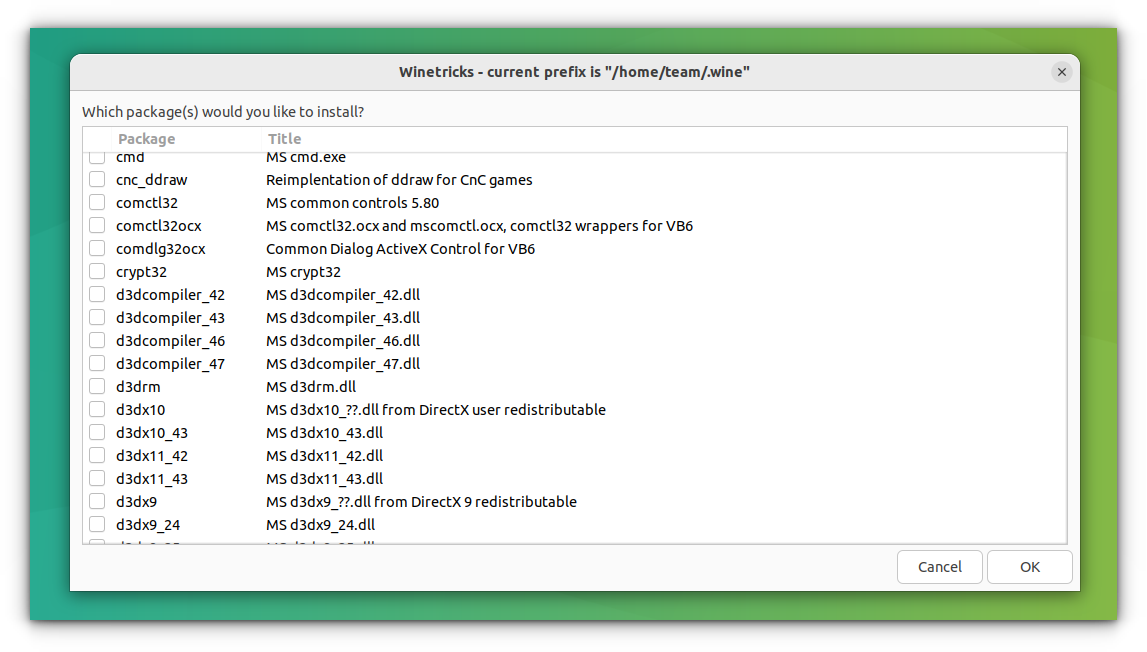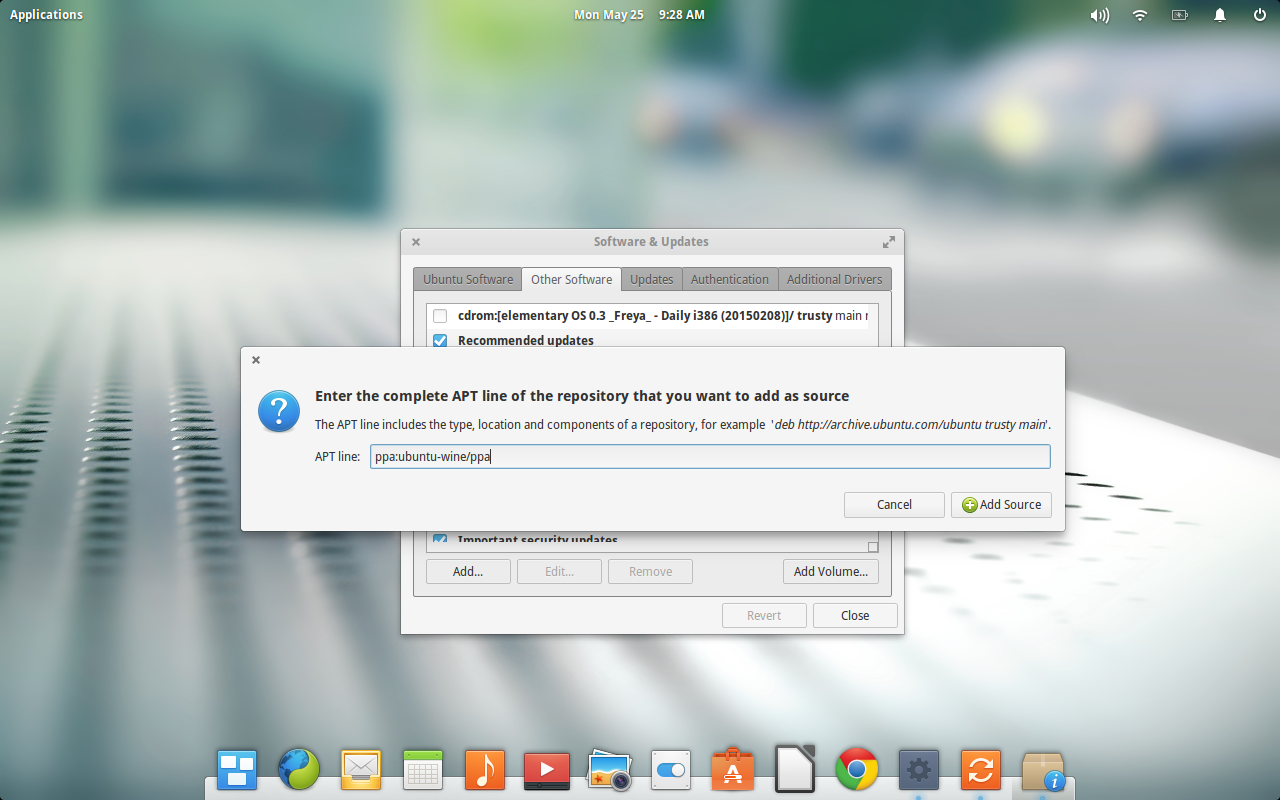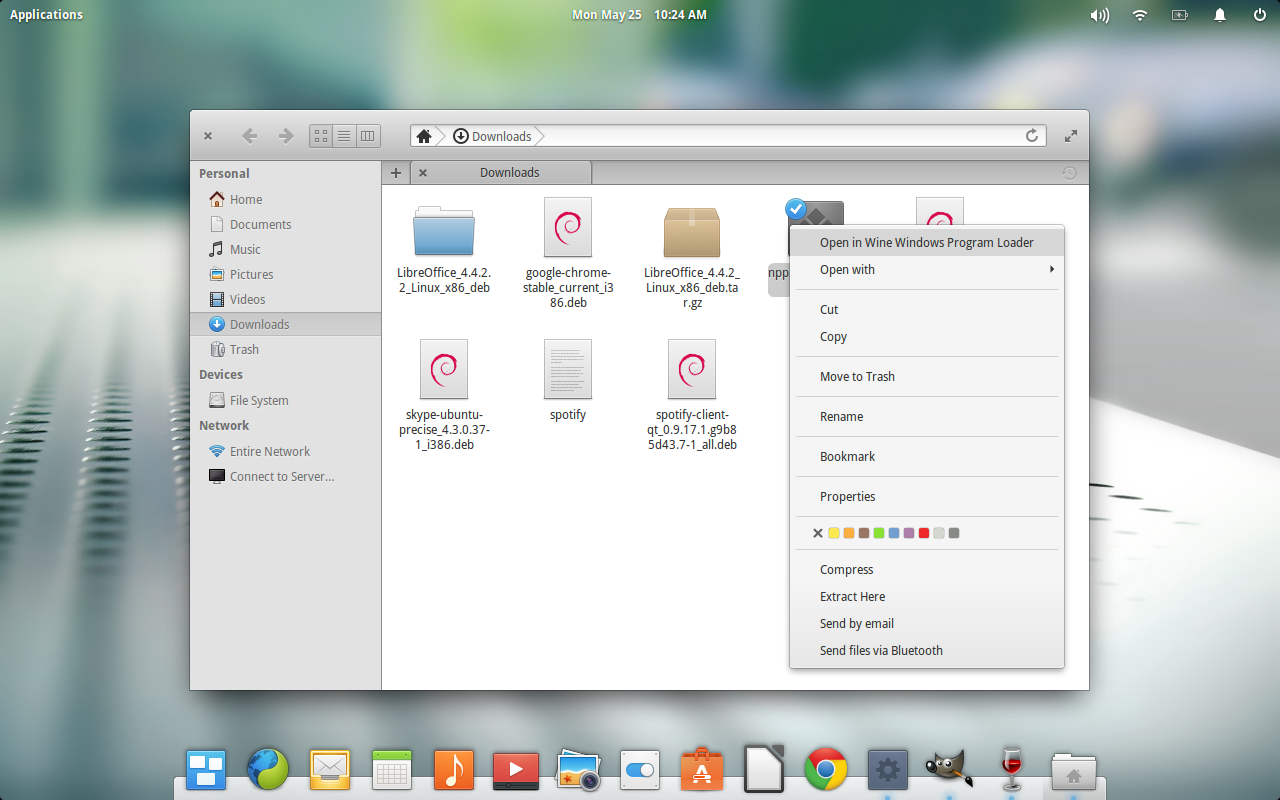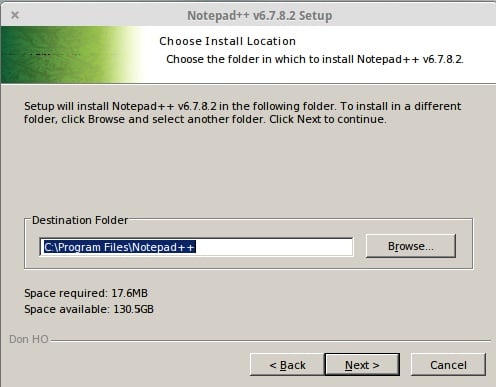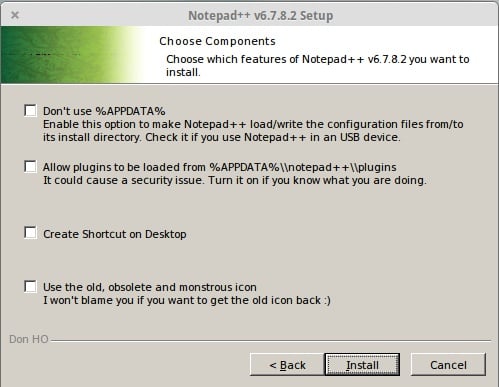As you’re here, I’m going to assume that you’re a Linux user. And every once in a while, you find yourself asking: can I run windows applications on Linux?
The answer to that question is yes. Yes, you can run Windows applications in Linux. Here are some of the ways for running Windows programs with Linux:
- Installing Windows on a separate HDD partition
- Installing Windows as a virtual machine on Linux
Both of them work just fine. But they are somewhat resource hungry.
If you only need to use a small Windows application, installing Windows on a separate HDD partition or as a Virtual Machine is not efficient. Moreover, Virtual Machine can’t utilize the total power of your machine. So, what is the solution?
No worries, there is another way to use Windows software on Linux. It’s called Wine. If you aren’t yet familiar with it or you are a beginner in the world of Linux, this article is for you.
In this beginner’s guide, I’ll show you what Wine is and how to use it to run Windows software on Linux. I have used Ubuntu here as Ubuntu is one of the best Linux distros for beginners, but any other Linux distribution will have more or less the same steps (except for the commands in Arch or Fedora-based distros).
Using Wine to run Windows programs in Linux
Wine stands for Wine Is Not an Emulator. And WINE is actually an acronym for that. And as previously stated, it’s not even a virtual machine.
Rather it is a compatibility layer for running Windows applications on UNIX-like, POSIX-compliant operating systems (e.g. Linux, Mac, BSD). While a virtual machine or emulator simulates internal Windows logic, Wine translates those Windows logic to native UNIX/POSIX-complaint logic.
In simple and non-technical words, Wine converts internal Windows commands to commands your Linux system can natively understand.
Installing Wine
There are various ways to install Wine on your system. Almost all the Linux distros come with Wine in their package repository. Most of the time the latest stable version of Wine is available via the package repository.
If you are using a 64-bit installation of Ubuntu, you will need to add 32-bit architecture support on your distro which will benefit you in installing specific software. If you don’t know whether you have a 32-bit installation or 64-bit, check this article on how to check if you have a 32-Bit or 64-Bit Computer.
Once confirmed, do this by executing the following command:
sudo dpkg --add-architecture i386In Ubuntu, you can install Wine by:
sudo apt update
sudo apt install wineGet the latest WINE version (optional)
But in the case of Ubuntu 22.04 LTS, the available package in the repo is Wine v6.0.3, while the latest stable release is v7.0.1. In the case of software like Wine, which receives significant updates frequently, always try to remain in the latest stable release. To do this in Ubuntu, first, you need to add the 32-bit architecture with the above step. Then download and add the repository key:
sudo mkdir -pm755 /etc/apt/keyrings
sudo wget -O /etc/apt/keyrings/winehq-archive.key https://dl.winehq.org/wine-builds/winehq.keyIn the next step, you need to download the Wine source file. For that, you need wget installed.
sudo apt install wgetAlso, you should know which version of Ubuntu is running on your system. In my case, I was running Ubuntu 22.04 Jammy Jellyfish.
To know your version, run this command in a terminal window:
lsb_release -csOnce you get your version name, replace this in place of jammy and execute the command below:
sudo wget -NP /etc/apt/sources.list.d/ https://dl.winehq.org/wine-builds/ubuntu/dists/jammy/winehq-jammy.sourcesNow update the package information.
sudo apt updateFinally, install the latest stable version of Wine with:
sudo apt install --install-recommends winehq-stableYou can use winehq-devel or winehq-staging for Development and Staging branch respectively.
Getting Started with Wine
Before we go on installing and running applications in Wine, we should have a clear idea about a few things and about how to configure Wine for usage:
WinePrefix
Windows applications need a C: drive. Wine uses a virtual C: drive for this purpose. The directory of this virtual C: drive is called wineprefix. First of all, you need to create a wineprefix. To do that, fire up a terminal and enter this command:
winecfgHere it prompts you to install the Wine Mono package needed for the .NET application to work properly. You can press the Install button to do this job.
This will create a wineprefix and open the configuration window for Wine. You can change the configuration options or let it be as it is and close it.
Now, you can locate the virtual C: drive at
$HOME/.wine/c_driveThe general rule is to install each new application into a fresh wineprefix. You can create and maintain multiple wineprefix manually. But that task would seem rather tedious for beginners. So, we will skip that part for now. But, later I will show how to do that part with ease.
Which Windows applications are supported by Wine?
A large number of Windows applications are currently fully supported by Wine. They will run without any hassle.
However, new Windows applications are being developed every day. Many of them wouldn’t function as we want on Wine. But the development pace of Wine is also rapid, and support for new applications is being added all the time.
And there is a dedicated database for keeping track of just that.
Wine Application Database has almost 28,000+ applications rated with different statuses depending upon how well those applications run in Wine. If you want to quickly check the rating of the application you want to use in Wine, you can take a look there. Here is the meaning of those ratings:
- Platinum: These applications install and run flawlessly in out-of-the-box Wine.
- Gold: These applications work flawlessly with some special configurations.
- Silver: Applications with minor issues are tagged as Silver.
- Bronze: The Bronze ones have major issues that seriously affect usage.
- Garbage: These simply won’t run on Wine.
Reviews, Installation Procedure, which Wine version it was tested against and various useful data are also available for each application here.
Of course, Wine Application Database is mostly user-generated data, so you are always welcome to try running an application with a different version of Wine and share your result with the rest of the community.
Finding an Application in Wine Application Database
Let’s see how we can find an application in Wine Application Database.
Go to Wine Application Database. Click Browse Apps from the left sidebar.
Click on the link to the application from the search result. You’ll see a description of the application. There will be a list of various versions with their compatibility rating with a specific Wine version.
Let’s click on the latest version link. This is the main page you need to check. There will be detailed information about that specific version.
Installing an Application with Wine
Installing a supported application in Wine is generally as easy as double-clicking on the installation file. However, you will now see a step-by-step guide for installing 7-zip on Wine.
First of all, check for 7-zip rating on Wine Application Database. It has a Platinum rating, so we are good to go. Open Wine configuration ( winecfg ) and set the Windows Version to Windows 7 (Shown in the above screenshot).
Right-click on the 7-zip installation file and select the Open With Other Application option.
After that, select Wine Windows Program Loader.
See that destination folder path? The 7-zip installation has recognized the virtual C: drive from wineprefix.
Finish the installation and you can now open the 7-zip application from the Ubuntu Activities overview.
All you have to do is click on the icon. If you want to access your files on Linux, they are generally located in Z: Drive.
You can use the 7-zip just as you would use it on Windows – for extracting and creating archives and such.
Uninstalling an Application with Wine
As said above, installing an application is easier with Wine. To uninstall an application, you have a Wine Uninstaller tool. You can access this tool by entering the terminal:
wine uninstallerThis will open the uninstaller window. Here, the list of installed applications will be present. You need to select the application, 7-zip in this case, and press Modify/Remove button as shown below:
This will initiate the uninstall process and can be completed easily on an application basis.
Let’s make things (a lot) Easier
You might have noticed that, in Wine Application Database, a specific Wine version is mentioned with every version of the application reviews.
It is because of the rapid development rate of Wine. Though an application runs with the current version of Wine, it might not run with a future version, because of the changes made.
Also, I’ve mentioned installing each application in its own fresh wineprefix. So, an application has no chance of interfering with another. And doing all these manually, usually from the terminal, is time-consuming, tiresome, and sometimes confusing.
PlayOnLinux is here to rescue you. It provides a nice interface for doing all these things easily. For installing PlayOnLinux on Ubuntu, simply run this command:
sudo apt install playonlinuxYou can easily perform every task related to Wine with PlayOnLinux from a beautiful and intuitive graphical interface:
- Installing & Uninstalling applications.
- Creating, Updating & Removing wineprefixes.
- Maintain Wine of different architecture and versions.
- Run & Create shortcuts for installed applications.
- And so on…
But still, you will need to check Wine Application Database for reviews, installation procedures, and such.
Advantages of using Wine
When it comes to running Windows applications on Linux systems, Wine provides many advantages over using emulators or virtual machines.
- Performance: Wine is immune to the performance loss that otherwise occurs while emulating.
- Native Experience: There is no need to open Wine before running a Windows application. Exactly how Wine works will be clear from this quote from the official site,
Wine can be thought of as a Windows emulator in much the same way that Windows Vista can be thought of as a Windows XP emulator: both allow you to run the same applications by translating system calls in much the same way. Setting Wine to mimic Windows XP is not much different from setting Vista to launch an application in XP compatibility mode.
Wine Derivatives
There are quite a number of projects for running Windows applications on other platforms, based on Wine:
- CrossOver: CrossOver is developed by the company named CodeWeavers. It is directly based on Wine with a few tweaks and proprietary add-ons. In fact, CodeWeavers employs a large portion of Wine developers. Unlike the rapid releases of Wine, CrossOver releases are more stable. The one major downside is that Crossover is not free.
- PlayOnLinux: PlayOnLinux is completely based on Wine. And provides an easier route for installing and managing applications with Wine. PlayOnLinux is free. It is also available for Mac as PlayOnMac.
- Bottles: Bottles app got huge popularity recently, because of its ease of use and various other life-saving features. It is available as a flatpak to install on all Linux distributions. You can run Applications and Games inside bottles.
- ReactOS: ReactOS is an entirely different open-source operating system for running Windows applications. It reuses a considerable amount of codes from Wine. However, this is a project under development for more than a decade and I won’t recommend it.
Purchase CrossOver Through the CodeWeavers Store Today!
Buy CrossOver Mac and CrossOver Linux through the CodeWeavers store. Choose from 12 month and lifetime license plans. Renewals are also available for purchase.

Additional Tips on using Wine
Winetricks
This is another important part of using Wine. Winetricks is a helper script to download and install various redistributable runtime libraries needed to run some applications in Wine. These may include replacements for components of Wine using closed-source libraries. Winetricks comes with Wine installation on Ubuntu through the package manager.
For starting winetricks, run this command:
winetricksIf you have installed Wine from Wine official repository, you may need to install winetricks separately.
To do this, open a terminal and enter the following commands:
cd "${HOME}/Downloads"
wget https://raw.githubusercontent.com/Winetricks/winetricks/master/src/winetricks
chmod +x winetricksNow open Winetricks with:
./winetricksThere are many options for helping you with various tasks.
Installing an Application with Winetricks
If you Install an app from winetricks, it will be installed in a separate wineprefix. Let’s install VLC:
So, select install an app from the options and click OK:
Now select VLC from this list:
It will then begin to download the VLC installation files. And then guide you through the rest of the process. It’s pretty simple.
Install Windows DLL or components and others
You can select a wineprefix from winetricks and install various libraries and components required by the application you want to run and also perform other operations.
And then select the required DLL or component to install:
📋
N.B.: If using winetricks seems complicated to you, it’s perfectly okay. I feel the same way too. I always use PlayOnLinux for this reason. PlayOnLinux can do everything you might need to do from winetricks.
For more information, you can check Wine FAQ and Documentation.
I hope you find this complete beginner’s guide to using Wine in Linux helpful. Now you can run Windows programs in Linux without installing a virtual machine or dual booting.
Let us know if you have any questions or opinions in the comment section below.
Если вы считаете, что GIMP не ровня Photoshop, и не можете жить без офиса от Microsoft.
1. Wine
Название Wine расшифровывается как Wine Is Not an Emulator. Это своего рода прослойка между приложениями Windows и системой Linux. Он позволяет устанавливать и запускать многие популярные Windows-программы и работать с ними так, как будто это родные приложения Linux.
Чтобы установить Wine, воспользуйтесь соответствующей командой.
1. Ubuntu, Debian, Mint:
sudo dpkg --add-architecture i386
wget -nc https://dl.winehq.org/wine-builds/Release.key
sudo apt-key add Release.key
sudo add-apt-repository "deb https://dl.winehq.org/wine-builds/ubuntu/ artful main"
sudo apt-get update
sudo apt-get install --install-recommends winehq-stable
2. Fedora:
sudo dnf install winehq-stable
3. openSUSE:
sudo zypper install wine
4. Arch, Manjaro:
sudo pacman -S wine
Когда Wine установлен, откройте его через ваше меню приложений или с помощью команды winecfg. При первом запуске Wine может попросить установить некоторые дополнительные пакеты — позвольте ему это сделать. После этого все Windows-программы формата EXE ассоциируются в системе с Wine.
Теперь скачайте установщик нужного вам приложения Windows, найдите папку с ним в вашем файловом менеджере и откройте файл. Либо введите команду wine путь_к_приложению.
Windows-приложение запустится и будет работать так же, как и всегда. Если вы открыли установочный файл, начнётся установка приложения — как в Windows. Если программа не требует установки, вы сможете начать работать с ней немедленно.
Не все приложения могут быть установлены и запущены в Wine, хотя количество поддерживаемых впечатляет. Полный список можно посмотреть здесь.
2. Winetricks
Wine — неплохой инструмент, однако интерфейс у него оставляет желать лучшего. Если вы намучились с этой программой, но так и не добились результата, попробуйте Winetricks. У неё приятный графический интерфейс для установки и запуска Windows-приложений, в котором куда проще разобраться новичку.
Установить Winetricks можно так:
1. Ubuntu, Debian, Mint:
sudo apt-get install winetricks
2. Fedora:
sudo dnf install winetricks
3. openSUSE:
sudo zypper install winetricks
4. Arch, Manjaro:
sudo pacman -S winetricks
Winetricks позволяет установить различные версии Microsoft Office и Photoshop, плеер foobar2000 и множество других программ. Поддерживаются и такие популярные игры, как Call of Duty, Call of Duty 4, Call of Duty 5, Biohazard и Grand Theft Auto: Vice City. Некоторые программы загружаются автоматически, для других будет предложено вставить установочный носитель. И, естественно, вы можете открывать собственноручно скачанные файлы формата EXE.
3. PlayOnLinux
PlayOnLinux — ещё один удобный инструмент для запуска Windows-приложений в Linux. Как и Winetricks, он обладает простым графическим интерфейсом. Но, в отличие от него, PlayOnLinux позволяет вам выбирать конкретную версию Wine для того или иного приложения. Это полезно, если какая-то из нужных вам программ некорректно работает с новыми версиями Wine. В целом PlayOnLinux выглядит куда симпатичнее и практичнее, чем Winetricks.
Чтобы установить PlayOnLinux, выполните в терминале одну из следующих команд:
1. Ubuntu, Debian, Mint:
sudo apt-get install playonlinux
2. Fedora:
sudo dnf install playonlinux
3. OpenSUSE:
sudo zypper install playonlinux
4. Arch, Manjaro:
sudo pacman -S playonlinux
В меню установки PlayOnLinux можно найти множество предварительно сконфигурированных приложений и игр, которые вы можете загрузить и установить парой щелчков. Кроме того, PlayOnLinux можно скармливать собственные EXE-установщики. Приложение заботливо выберет за вас версию Wine и создаст значок установленной программы на рабочем столе.
4. Crossover
Изредка бесплатные PlayOnLinux и Winetricks не справляются с установкой какого-нибудь особенно привередливого приложения. В таком случае вам может помочь Crossover. Эта программа очень проста в использовании. Вам достаточно указать, какое приложение вы хотите установить, и подсунуть Crossover установочный файл. Всё остальное будет сделано за вас.
Лицензия Crossover на год стоит 39,95 доллара, но у программы есть и бесплатная пробная версия. Рекомендуется сначала установить необходимое вам приложение в ней, чтобы убедиться, что оно работает корректно.
Crossover →
5. VirtualBox
Если ваше приложение упорно отказывается запускаться в перечисленных выше программах, можно пойти на решительные меры и установить его в виртуальной машине. Учтите, что она отнимает гораздо больше системных ресурсов, поэтому использовать её стоит в крайних случаях.
Для запуска приложения в виртуалке вам понадобится установочный образ Windows в формате ISO. Загрузите и установите VirtualBox, создайте в нём виртуальную машину, укажите ей ISO с Windows, а затем просто установите систему как обычно.
Неоспоримый плюс виртуальной машины — в ней работает полноценная операционная система, а значит, запустится абсолютно всё. Минус — прожорливость в плане системных ресурсов, да и тратиться на лицензию Windows для виртуалки накладно.
VirtualBox →
Читайте также 🧐
- 6 задач, с которыми Linux справляется лучше, чем Windows
- Как реанимировать Windows и сохранить данные с помощью live-дистрибутива Linux
- Как обмениваться файлами по воздуху между Windows, macOS, Linux, iOS и Android
This is a classic article written by Jack Wallen from the Linux.com archives. For more great SysAdmin tips and techniques check out our Essentials of Linux System Administration course!
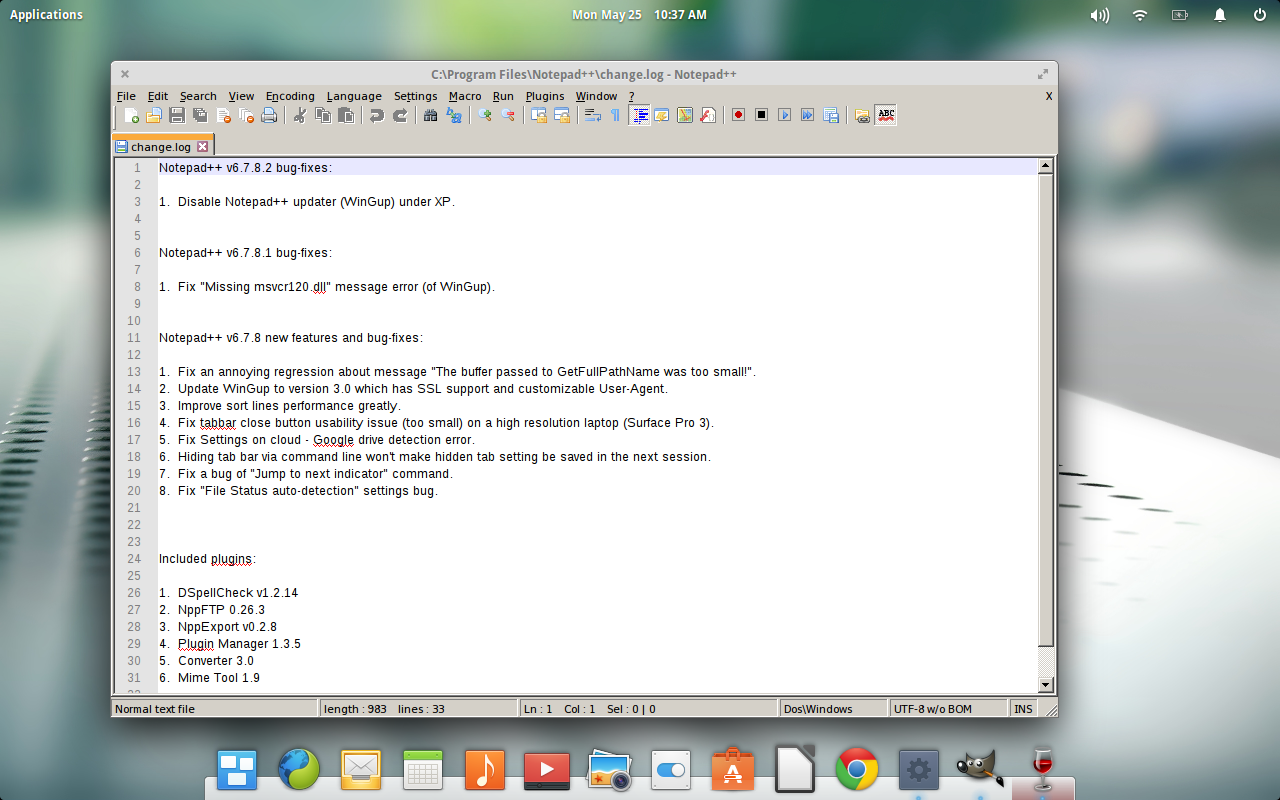
Back in the mid 90s and early 00s, Linux, being a fledgling operating system, suffered from a severe lack of useful applications. This issue was especially critical in the world of business ─ where Windows desktop applications could make or break productivity. To overcome this weakness, a compatibility layer called WINE was created. The name originally stood for Wine Is Not an Emulator (because everyone mistook the tool for a Windows emulator). The name is now simply Wine.
Effectively, what Wine did was to allow Windows applications to run on the Linux platform. It wasn’t perfect, and the supported apps were limited. If you wanted Notepad, Calculator, or Solitaire…you were good to go.
But then something interesting happened. Over time more and more applications were supported until Wine became a must-have tool for many users and businesses (and especially Linux gamers). To date there are thousands of fully supported applications that now run on Wine (check out the application database for a full list) and that list is ever growing. Granted most of the Wine work is focused on games, but you’ll still find a healthy list of productivity apps available.
You might think, because of the complexity of bringing such a tool to life, that Wine would be complicated to install and use. That assumption would be incorrect. In fact, the developers of Wine have gone out of their way to make the compatibility layer as user-friendly as possible. What exactly does that mean? To make this easier, let’s walk through the process of installing Wine and then installing and running a Windows application with the tool.
I will demonstrate the process on Elementary OS Freya and install the latest version of Wine.
Installation
If you are running an Ubuntu derivative, you’ll find Wine located in the Software Center. Chances are, however, that version is outdated. Because of that, we want to avoid installing the “out of the box” version offered. To do this, we must add the official Wine repository. This can be done one of two ways, via command line or GUI. Since our goal is running Windows applications, let’s use the GUI method.
Here’s how:
-
Click on the Applications menu
-
Type software
-
Click Software & Updates
-
Click on the Other Software tab
-
Click Add
-
Enter ppa:ubuntu-wine/ppa in the APT line section (Figure 2)
-
Click Add Source
-
Enter your sudo password
-
Click Authenticate
-
Click Close
-
When prompted, click Reload
-
Open the Software Center
-
Search for Wine
-
Click the Wine entry and then click Install
-
Allow the installation to complete.
That’s it. Wine is now ready to help you install and run Windows applications. Remember, however, that not every application will work. Most will, but if you’re looking to get your in-house, proprietary solution up and running, you might hit a few snags.
Installing and running an app
Let’s install a very popular programmers notepad—Notepad++. You’ll want to download the file from a location that doesn’t include third-party app install options (which can cause the application installation to fail). To be safe, download the Notepad++ installer from Filehippo. You will find .exe file for Notepad in your Downloads directory. Right-click that file and select Open in Wine Windows Program Loader (Figure 3).
Upon first run, the Wine configuration for ~/.wine will be updated. This can, depending upon the speed of your machine, take a bit of time. Allow this to finish and then the all-too-familiar Windows installation wizard will start up and walk you through the installation of Notepad++.
Click Next and walk through the installation process. When the second screen pops up (Figure 4), you will notice a rather un-Linux Folder path.
Linux doesn’t contain a C drive as does Windows. Is this wrong? No. If you look in the ~/.wine folder, you will notice a folder called drive_c. Within that folder lies three familiar sub-folders:
-
Program Files
-
users
-
windows.
As you might expect, this is your C drive. All of that is to say, leave the Folder path as-is during installation.
You will eventually come to the Choose Components section of the installation (Figure 5). Here you can select options for the installation. If your particular desktop environment allows desktop icons (and that is your preference for launching apps), you might want to select Create Shortcut on Desktop (to make the launching of the newly installed app easier—more on this in a moment).
The installation will complete and present you with the Finish screen. Leave the Run Notepad box checked and click Finish. Notepad++ will run (Figure 1).
What happens, if you didn’t add the app icon to your desktop, when you want to run the software again? This is one issue that can easily trip users up. Remember that Program Files sub-directory? If you venture into that folder, you’ll see a folder for Notepad++ which contains the notepad++.exe file. Guess what? Right-click that file, select Open in Wine Windows Program Loader, and Notepad++ will run.
Notepad++ is a simple example of how Wine works. When you dive into more complicated applications, your results may vary. The best thing to do is to go back to the Wine application database, locate the app you want to install, click on it, and check the current app status. You will find every app lists the version of Wine tested, if it installs, if it runs, and gives it a rating. There are:
-
Platinum: Applications which run flawlessly out of the box.
-
Gold: Applications which run with some modifications necessary.
-
Silver: Applications which run with minor issues that do not affect usage.
You will also find some apps listed as Garbage, which means they won’t install and/or run.
If you have a Windows app that simply doesn’t have a Linux equivalent, never fear ─ Wine is here to assist you. Even though not every Windows app will run under Wine, the collection of apps that do is seriously impressive. And considering most everything we do nowadays is handled within a web browser, with a little help from Wine, you should be covered from every angle.
Ready to continue your Linux journey? Check out our Essentials of Linux System Administration course!
Running Windows applications on your Ubuntu Linux box is very possible. WineHQ app for Linux makes this possible by forming a compatible layer between the Windows and Linux interfaces. Note: Some applications can still be installed from the Ubuntu software center but not all Windows applications. In this article, we shall discuss “How to run Windows applications on Linux via WineHQ”. Please see WSL: What is Windows Subsystem for Linux, How to uninstall an application using PowerShell Script, and How to start an application automatically on Mac.
To run Windows games or software, you’ll need to download the files for them as you would on Windows. Some may have specific installation instructions, so be sure to check for an entry in the Wine application database first.
Is WineHQ free?
Wine is a free and open-source compatibility layer that aims to allow computer programs developed for Microsoft Windows to run on Unix-like operating systems.
Wine also provides a software library, known as Winelib, against which developers can compile Windows applications to help port them to the Unix-like system. Here are some guides that might interest you: How to install and configure JIRA on Linux, what is Wine HQ: How to get WineHQ, and Install WineHQ on Linux to run windows applications.
Approximately half of Wine’s source code is written by volunteers, with the remaining effort sponsored by commercial interests, especially CodeWeavers, which sells a supported version of Wine. Please see How to clean packages laying around in Linux, and how to Set Two-Factor Authentication for SSH in Linux. As of April 24th, 2020, WineHQ version, 5.7 was released. Below are what is new in the release.
- Wine Mono engine updated to 5.0.0, with upstream WPF support.
- More progress on the WineD3D Vulkan backend.
- Beginnings of a USB device driver.
- Support for building with Clang in MSVC mode.
- Built-in modules no longer depend on libwine.
- Support for configuring Windows version from the command line.
Various bug fixes.
For further releases of Wine, please visit the WineHQ documentation website to learn more.
How does WineHQ work?
Instead of simulating internal Windows logic like a virtual machine or emulator, Wine translates Windows API calls into POSIX calls on the fly, eliminating the performance and memory penalties of other methods and allowing you to cleanly integrate Windows applications into your desktop.
How do I get WineHQ?
To get Wine, visit the following link. For Wine HQ installation on Ubuntu. Also, see how to run Windows applications on Linux.
WineHQ Application Database (AppDB): Here you can get information on application compatibility with Wine. An example is Notepad ++ which is compatible with WineHQ.
Search the database for an application to see ratings, comments, tips, guides, and tweaks stated by other users. Note: Platinum-rated applications run perfectly, with no tweaks required, while garbage-rated applications don’t run at all.
Installing Windows Applications
Windows files are installed on the “C” drive. As this doesn’t exist on Linux, Wine creates a folder (usually /home/your-username/.wine/drive_c) to act as the “C” drive for your Windows software.
This is where you will have to locate any installed software or games. This is probably going to be found in the “Program Files” or “Program Files (x86) folders. Once you’ve located your software, you can run it the same way you ran the installer. See Example two below.
wine example-installer.exeExample 1:
Once WineHQ is installed, you can download an application’s EXE or MSI (Microsoft Installer) file and double-click on it, just like you would if you were using Windows — to run it with Wine.
Next, you will have to access the Downloads folder where the application downloaded was saved to as shown below.
Next, right-click on the installer and select Open with Another application
This will open the application installer interface as shown below. Here, you can now work through the entire installation process.
The installation of notepad ++ is relatively easy and straight forward as shown below.
Now that the installation is complete, you can now launch Notepad ++
Example 2:
Sometimes, you might encounter issues with the above example. In this case, you will have to run the application from the terminal to see the related errors. Run the following command and replace the path with your application path.
wine /path/to/application.exeIf it is an MSI file, the following command below should be used instead.
wine msiexec /i /path/to/installer.msiRegistry & File System: Some applications require registry tweaks to work properly. You’ll often find information about which registry entries to modify on the application database. Execute the “regedit” command from a terminal to access Wine’s registry editor. For more on regedit, see the following articles.
– How to search through the Windows registry
– How to display Windows system information via the Windows registry.
– What is Registry Editor and how to access the registry hives, and
– Install Synaptic Package Manager: How to install, remove, and upgrade packages in Ubuntu Linux.
If you found this article useful on How to run Windows applications on Linux via WineHQ. Please let me know in the comment section if you have any questions.

Do you have specific Windows applications that you can’t go without? If so, is that the reason why you’ve not already made the switch to the superior and open-source Linux operating system?
For the longest time, one of the biggest complaints about Linux was that users couldn’t install the software they needed to be productive. Thanks to numerous advances, that is no longer the case — and one of those advances is Wine.
Also: The best Linux laptops for consumers and developers
Wine is a compatibility layer that makes it possible to run Windows apps on Linux. When you combine the lengthy list of applications you can install on Linux with the built-in app stores, the universal package managers Snap and Flatpak, and Wine, the list of available software is considerable.
If you’re curious as to what apps can be run with Wine, here’s a searchable database that lists the apps, from games to productivity tools, and everything in between.
Also: Ready to ditch Windows for Linux? This is the ideal distro for you
But how do you actually run those Windows apps on Linux with Wine?
Let’s get to work.
How to run a Windows app on Linux with Wine
What you’ll need: I’ll demonstrate the process on Ubuntu Desktop, but Wine can be installed on most Linux distributions. In order to install Wine, you’ll need a running Linux distribution and a user with sudo privileges. That’s it.
The first thing to do is log in to your Linux desktop and open a terminal window.
Install both Wine and Winetricks, which is a tool to make configuring Wine easier, with the command:
sudo apt-get install wine winetricks -y
If you’re using an RHEL or Fedora-based distribution, you would first have to add the necessary repository with the command:
sudo dnf config-manager --add-repo https://dl.winehq.org/wine-builds/fedora/36/winehq.repo
You can then install Wine with the command:
sudo dnf install winehq-stable -y
Run the Winetricks app, which will automatically create the necessary directories for you with the command below.
Also: How to get started with Git on Linux
In the resulting window, you’ll want to click Select the default wineprefix and click OK. In the next window, select Run winecfg and click OK. You can then configure the version of Windows you want Wine to mimic by selecting the option from the Windows Version dropdown and clicking OK.
Winetricks makes it easy to configure a number of Wine options.
Jack Wallen/ZDNET
Winetricks allows you to also take care of a number of other options, such as installing DLLs, fonts, and more.
Also: Fedora 36 is one of the best options for new Linux users
But at this point, you can close out that window and prepare to install your first Windows app.
Installing a Windows app with Wine
I’m going to show you how to install the Notepad++ Windows app with the help of Wine. Here’s what you need to do.
First, download the Windows installer for the app and save it in your Downloads directory. Then, open your terminal window and change into the Downloads directory with the command cd ~/Downloads.
Also: How to choose the right Linux desktop distribution
Run the installer with the command wine npp.*.exe. Finally, the Windows install wizard will open, where you can click your way to success.
Installing a Windows app on Linux with Wine is simple.
Jack Wallen/ZDNET
Once the installation completes, you’ll find the Notepad++ launcher in your desktop menu.
Installing a Windows app with Winetricks
Another cool trick up Wine’s sleeve is the ability to install a Windows app directly from within Winetricks. If you run the Winetricks app, which can now be launched from your desktop menu, and select Install an application, you’ll be greeted with a list of applications that can be installed directly from the GUI.
Also: Want to save your aging computer? Try these 5 Linux distributions
This method will automatically download and run the necessary installer file, and then open the install wizard to complete the process.
Winetricks allows you to easily install a number of applications.
Jack Wallen/ZDNET
Further configuration might be needed
Notepadd++ is a fairly simple app to install with Wine. You might find there are some apps (especially games) that require further configuration. Should that issue occur, you’ll want to run the Winetricks app again to take care of those configurations.
How much work needs to be done will depend on the app you want to install. If you receive errors when trying to install a Windows app via Wine, you might have to do a bit of research to figure out what configurations are necessary for that particular app.
Also: 8 things you can do with Linux that you can’t do with MacOS or Windows
But even with those potential issues, installing supported Windows apps on Linux with Wine is considerably easier than you might think. Enjoy those Windows apps running on Linux.

